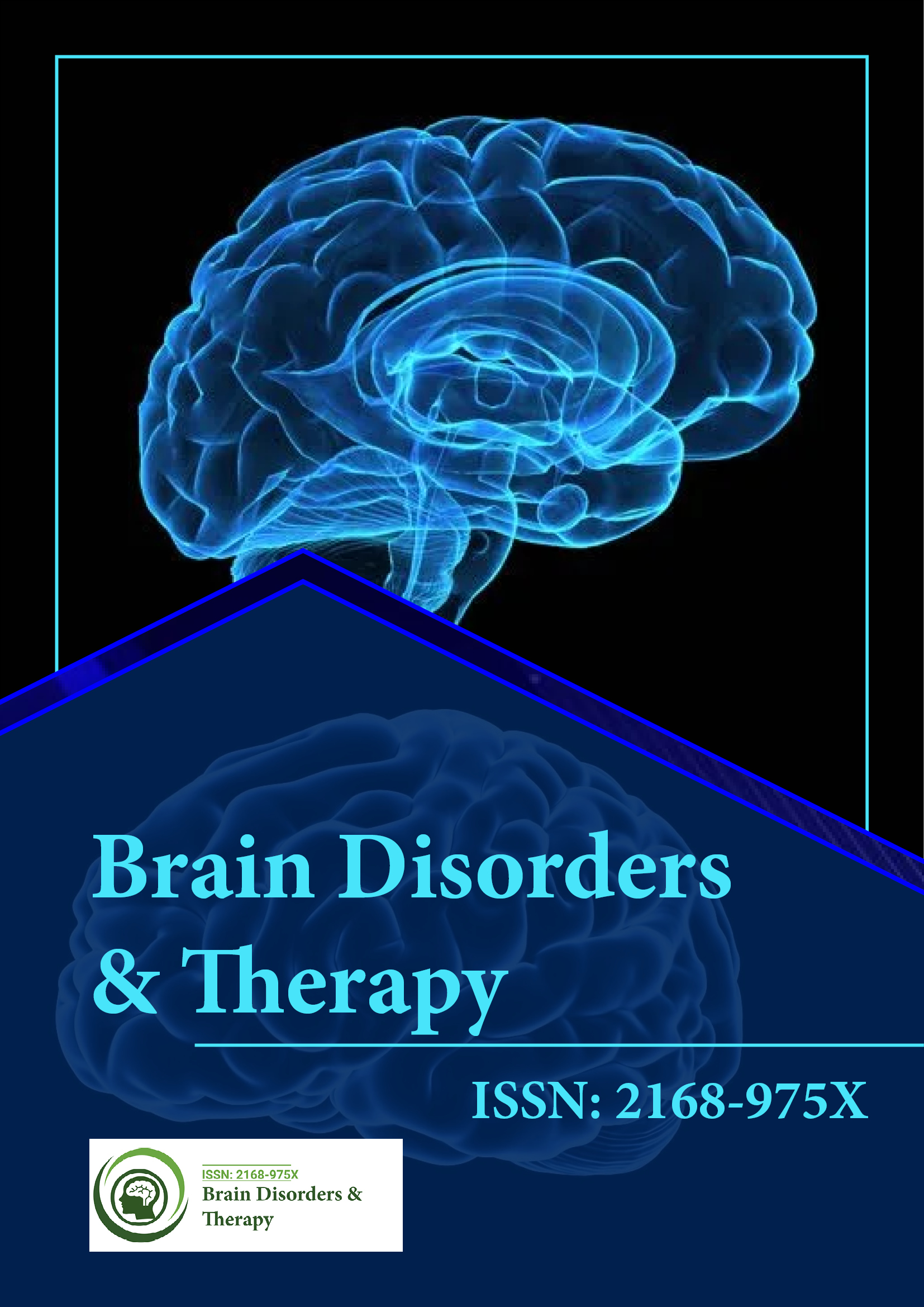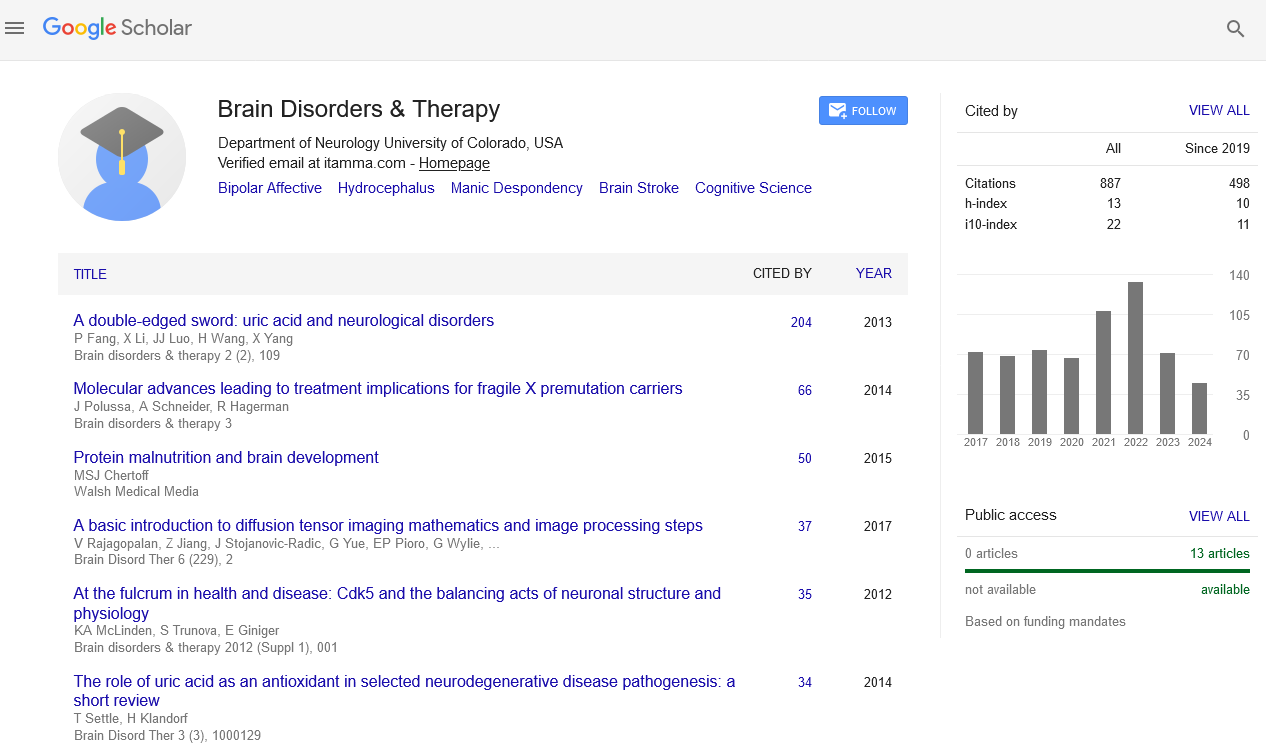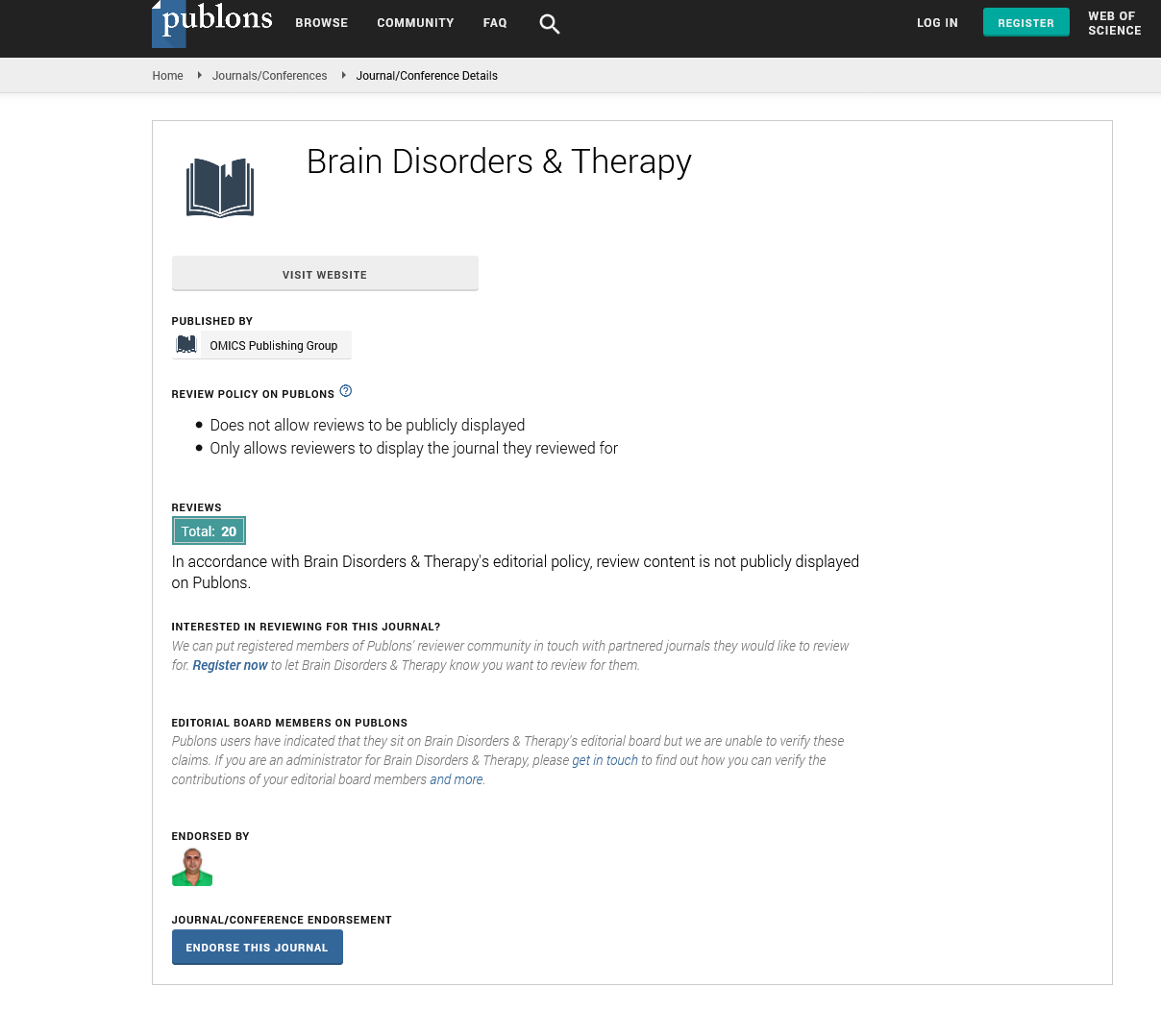PMC/PubMed Indexed Articles
Indexed In
- Open J Gate
- Genamics JournalSeek
- JournalTOCs
- RefSeek
- Hamdard University
- EBSCO A-Z
- OCLC- WorldCat
- Publons
- Geneva Foundation for Medical Education and Research
Useful Links
Share This Page
Journal Flyer

Open Access Journals
- Agri and Aquaculture
- Biochemistry
- Bioinformatics & Systems Biology
- Business & Management
- Chemistry
- Clinical Sciences
- Engineering
- Food & Nutrition
- General Science
- Genetics & Molecular Biology
- Immunology & Microbiology
- Medical Sciences
- Neuroscience & Psychology
- Nursing & Health Care
- Pharmaceutical Sciences
The management of acutely ruptured intracranial aneurysms
Global Summit on Stroke
August 03-05, 2015 Birmingham, UK
Andreas Gruber
Posters-Accepted Abstracts: Brain Disord Ther
Abstract:
The management of intracranial aneurysms rests on two major therapeutic strategies, which can be either reconstructive or
deconstructive in nature. Reconstructive treatment strategies result in selective aneurysm occlusion without impairment
of parent artery patency. Such strategies include both microsurgical clipping and endovascular coil embolisation as well as
stent and balloon supported embolisation. In the clinical setting of hemorrhagic stroke from intracranial aneurysm rupture, the
results of the ISAT trial still indicate advantages of endovascular over microsurgical aneurysm occlusion in cases of clinical
equipoise. In contrast, deconstructive treatment strategies aim for aneurysm occlusion in conjunction with therapeutic parent
artery sacrifice. Such procedures may be performed as parent artery occlusion alone or in conjunction with protective bypass
surgery. In selected cases, flow reversal and flow modification techniques may be performed. In view of the multitude of
therapeutic options and different clinical scenarios after hemorrhagic stroke from intracranial aneurysm rupture, the often
raised “clip or coil” debate does not cover the entire field of management of acutely ruptured intracranial aneurysms.


